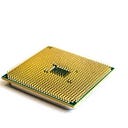“ Future of Semiconductor Industry in 2021 ”
The semiconductor industry is the aggregate collection of companies engaged in the design and fabrication of semiconductors. It was formed around 1960, once the fabrication of semiconductor devices became a viable business. The industry’s annual semiconductor sales revenue has since grown to over $481 billion, as of 2018.

One of the most widely used semiconductor devices is the MOSFET .i.e. metal oxide semiconductor field-effect transistor, or MOS transistor which was invented by Mohamed M.Atalla and Dawon Kahng at Bells Labs in 1959.
Malcolm Penn, the chairman and CEO of the Future Horizons, UK. He provided an update on the midterm global semiconductor industry and forecast. He said that a situation which has started in China was declared a pandemic on March 11, 2020. Countries restricted mobility to curb its spread and protect lives. The world’s GDP outlook declined to three per cent since April. In 2021, according to economists, there will be a growth of 5.4 per cent. However, 2020 has seen the global semiconductor market growing despite global lockdown and collapse in GDP. The underlying heartbeat has been remarkably consistent. TSMC, Samsung, Intel. SK-Hynix, kioxia, Micron, etc had the advanced capacity which is in the hands of very few companies. Capex spends across the regions which have seen growth in China, and saw a rise to meet than 25%, while the US spend halved in the past 10 years. Japan also declined to 24%, with Europe barely registering. There is a fast decline and slow recovery in the IC ASP cycle. The recovery rate is about 47 years which is a long time. The improving industry momentum was going into 2020. There are more chances of a downside than an upside. The current outlook for 2020 is around +4 per cent growth.
For the global semiconductor industry, it is forecast that year 2021 will show +12 per cent growth. 2021 will be strong if Q4 holds steady. The impact of covid-19 in the year 2020, the semiconductor market should be $23 billion lost. For 2021, the downside impact loss should be around $24 billion. It mainly depends on the Q4–20.
The transistor density will continue to increase. Moore’s Law is still sailing on ahead. About 100 billion transistors are expected by 2022. Moore’s Law has been accelerating at TSMC. TMSC did three full nodes in 6–½ years. There are data centres and servers which use MPUs and complex SoCs, SSDs, gateways and connectivity, and IoT network nodes. First real IoT products are starting to appear. Healthcare is one of the next biggest killer apps for semiconductors.
With Foxconn, The China, OEM production capability is already the best in the world-class. Wafer fabs will follow and catch up by 2030. China has a scale, and the need and ability. Covid-19 has exposed the extent to which global electronics supply is outsourced to China. There is no supply chain plan B as of now. The US ‘Chips for America Act is not the right way of doing that. There is no shortage of opportunities. AI, automation, ML and robotics will all impact a society. There is really a very huge acceleration of personal health and medicals which is dwarfing everything. Moore’s Law is not yet dead or sick and also there is no shortage of technology.
There are sound semiconductor fundamentals. The key challenge is to leverage the crisis so that it should emerge even stronger. The rebound will be strong. Japan and Korea had a weak local market. There is a chance of a change in leadership. The forecast summary is 4 per cent for 2020 and it will be growing to 12 per cent for the year 2021. The economic risks are the second wave lockdown, US and China trade war escalation and supply chain destabilization.
Semiconductors are the crucial components of electronic devices. Due to its ability to conduct the electricity under some circumstances but not others, they are very useful for controlling electrical currents. By adding some of the impurities to a semiconductor, the manufacturers are able to customize its connectivity like by making it light or by heat sensitive.
